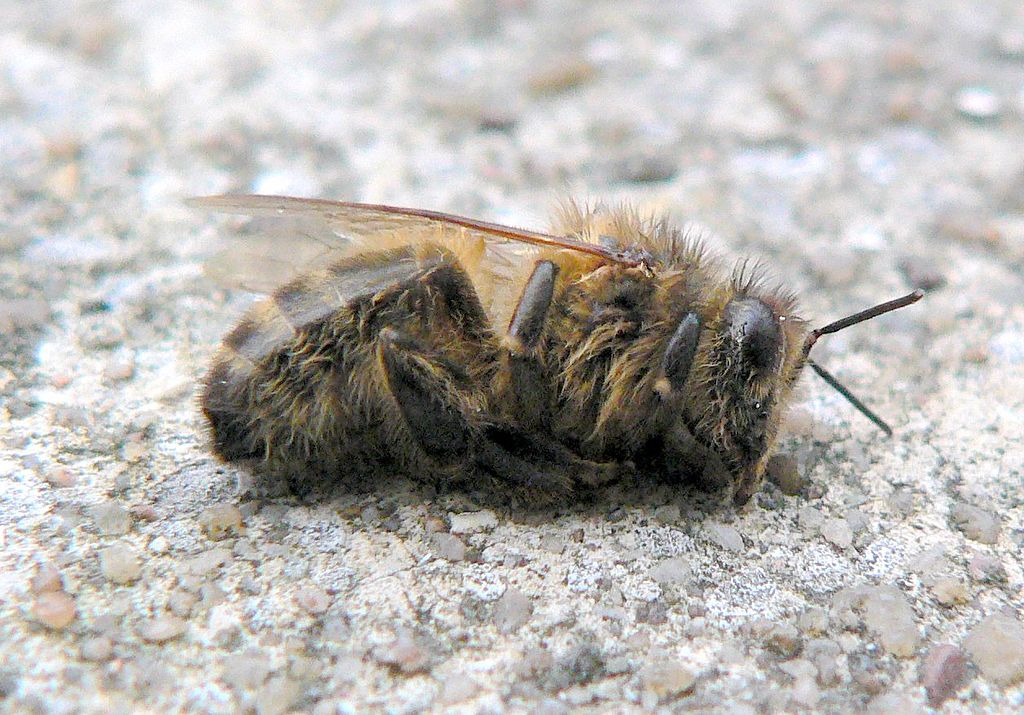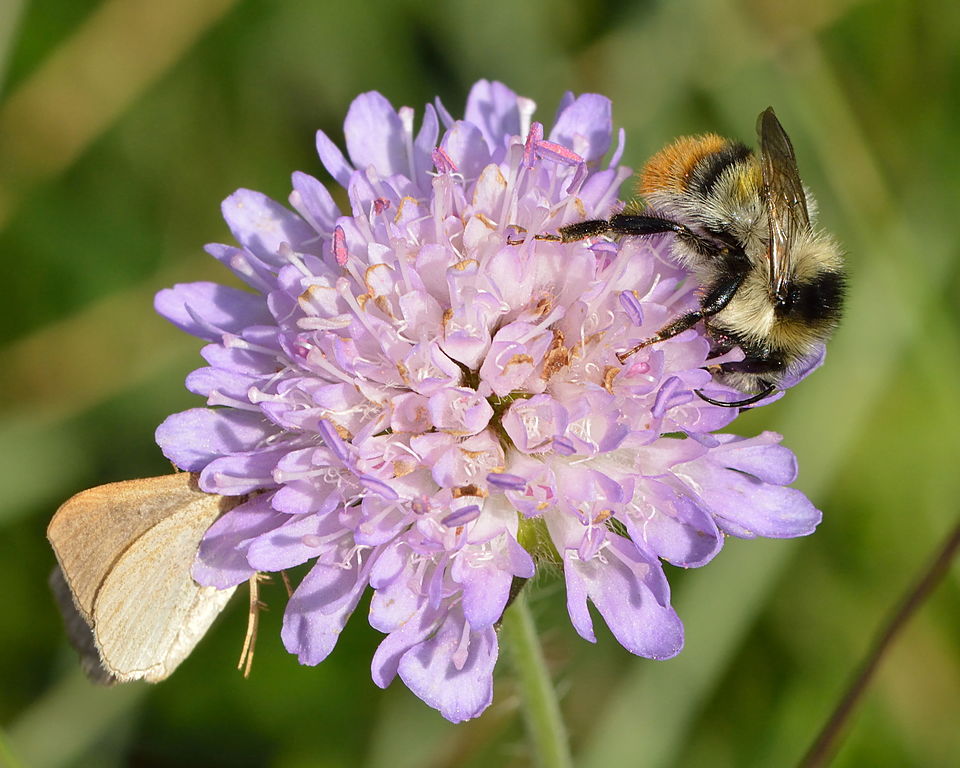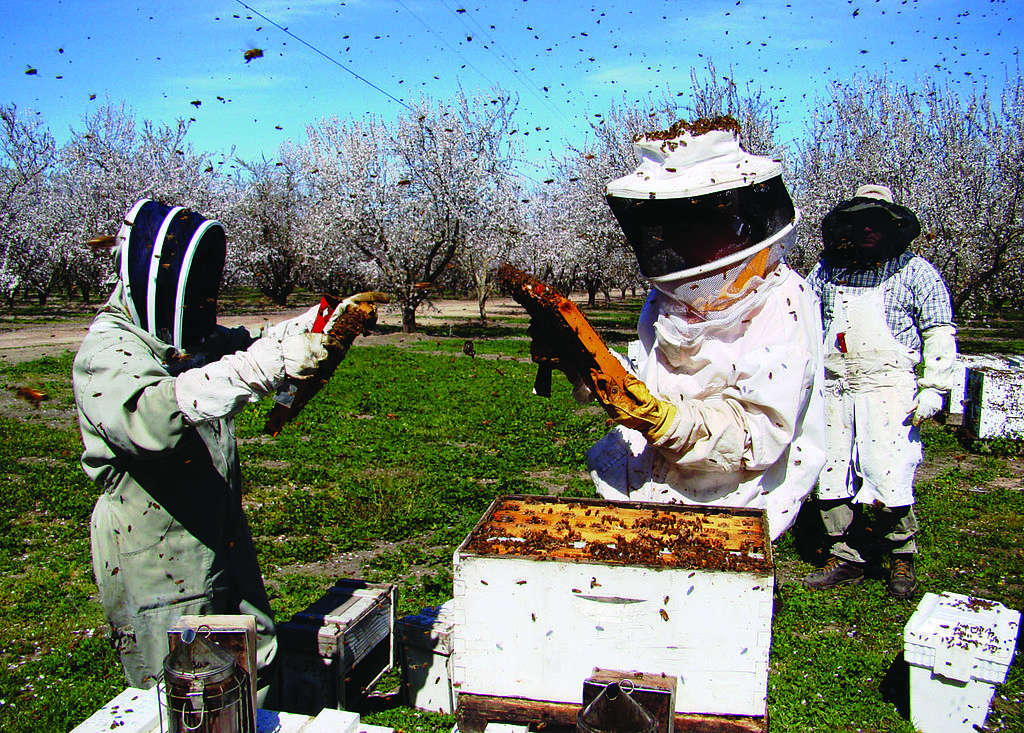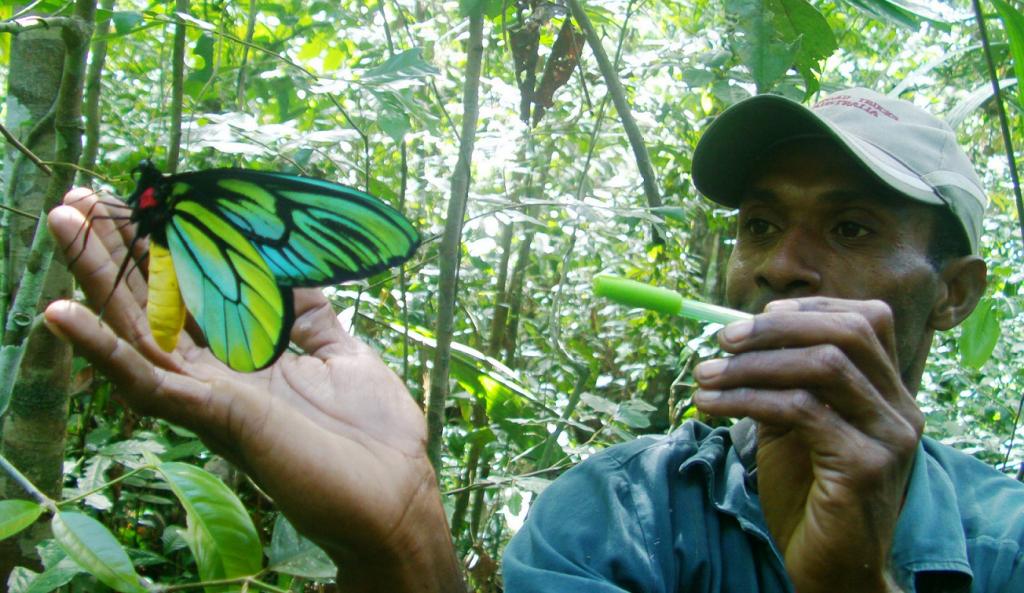
I have just finished reading Professor Dave Goulson’s gripping, disturbing but ultimately inspirational book – Silent Earth. Averting the Insect Apocalypse. I cannot be alone in noticing that insects seem to have almost vanished from our gardens, parks and countryside, particularly this summer. No more walking through fields kicking up a squadron of grasshoppers. No more soporific hum of bees from the flowerbed…just the odd buzz from the rare visitor. We take insects for granted at our peril. As Professor Goulson says in his introduction:
‘The decline of insects is terribly sad for those of us who love the little creatures and value them for themselves, but it also threatens human well-being, for we need insects to pollinate our crops, recycle dung, leaves and corpses, keep the soil healthy, control pests and much, much more. Many larger animals such as birds, fish and frogs rely on insects for food. Wildflowers rely on them for pollination. As insects become more scarce, our world will slowly grind to a halt. As Rachel Carson said, ‘Man is a part of nature, and his war against nature is inevitably a war against himself.”
I strongly recommend that everyone reads this important book. It made such an impression on me that I contacted Professor Goulson and asked for an interview which he readily and generously granted. What follows is a record of our conversation.
Silent Earth – averting the insect apocalypse was published in 2021. Do you feel that the people and bodies that need to take on board your message, have done so…or are beginning to? Is the scale of the crisis understood and appreciated? I guess there’s a real risk that most recognition of the issue exists only in a bubble?
It does, but that bubble is growing as a consequence of engagement with the subject of climate change, which has shot up recently. But the trouble is that most people don’t give a stuff about insects, seeing them mainly as things to be avoided, swatted or sprayed. It’s not that these people are nasty or cruel. They simply don’t know why insects are so important. They just feel the impulse to squash! I am trying to do my bit to educate people so that they appreciate just how vital insects are.
If you could get this government to take one action to improve the chances of averting disaster, what would it be?
There are so many things we need government to do, but key is addressing the way we farm in this country. Our farming methods are often hostile to wildlife – insect, animal and plant.
The quickest win for government would be to phase down the use of pesticides as quickly as possible. The EU have set a target of cutting pesticide use by half by 2030. Our government’s Environmental Land Management Schemes don’t even mention pesticide use! [ELMs: supposed to reward environmental land management through sustainable farming and incentives to promote local and landscape recovery. Ed]. The biggest causes of collapse in insect populations are loss of habitat, and pesticide use.
There are some great initiatives out there, like the Pesticide Action Network (PAN), which is an international charity working to eliminate pesticide use. Other countries have done a lot more to cut their use. France, for example, banned the use of pesticides in urban environments back in 2018. If Paris can be pesticide-free, why can’t our cities, towns and villages? It’s a relatively small step, yes, but it’s a quick and easy win!
Of course, it’s harder for farmers, concerned with crop productivity and food security, but the evidence is there that by setting aside between 3 and 8 per cent of farm land to foster bio-diversity (and those can be the most unproductive areas of the farm from a crop point of view), you get pest control for free, and yields equivalent to, or greater than, those from farming 100 per cent of the land. And you save money on pesticides.
We can all help by refusing to use pesticides, and pushing to ensure our local and regional councils stop using them, too.
So let the predator insects, birds and animals keep the nasties under control?
Yes; otherwise we risk being left with pests which are resistant and who breed quickly. That’s a recipe for disaster.
Following on from that, one big revelation for me was that so many of the plants sold at the big commercial garden centres and supermarkets are already loaded with insecticides. How can we help force the big chains, in particular, to change that policy? People buy ‘bee-friendly’ plants in good faith!
Yes, it’s sad, but those tempting rows and rows of pretty plants – some labelled as ‘good for pollinators’ – are very often full of pesticides. They are mostly imported, having been grown in massive greenhouses in the Netherlands and other parts of Europe. There’s zero traceability and the retailers certainly have no clue whether they’ve been treated, and with what.
So people buy a load of plants wanting to bring life into their gardens and end up importing death?
I’m afraid so. The studies my team and I conducted were back in 2017, but I see no reason to think that anything has changed. But it’s not all bad. There are organic nurseries, and some of them will send you plants through the post. I would really encourage people to do plant swaps with friends and neighbours, or to buy organically raised plants.
The big garden centres’ plants are frequently bad for the environment in other ways, too – grown in peat-based compost in non-recyclable plastic pots*, and garden centres also sell all manner of tat that doesn’t work. [*Even if pots are recyclable, many end up in the black bin, because people do not return them to the shop. Ed]
But, again, it’s not all bad news. The trend in gardening for wildlife is growing all the time and people have really embraced initiatives like ‘no mow May’ etc, and that’s great. However, it’s estimated that 8 per cent of gardens have plastic grass!
We’ve seen cases of property developers proudly showing off great expanses of plastic lawns…
Well…there’s another example of well-intended legislation that is both complicated and difficult to enforce. The bio-diversity net gain legislation for developers is a good example. Developers have to complete a complicated spreadsheet to comply, but the fact is that they have 15 years to fulfil the bio-diversity obligations and can simply sow a commercial wildflower mix in a few square metres on a bit of land and claim to have met the requirements. And there’s no-one to check!
Enforcement is a real issue, with savage cuts to the Environment Agency etc. We worry, too, about tree-planting schemes which boast hundreds of thousands of trees planted but have no stats on how many survived.
Yes. That’s a real issue and often they’re the wrong species, non-native, or simply planted in the wrong place or in the wrong way.
It’s box-ticking, isn’t it? Let’s move on to another area of bad news. Insects are in decline across the board. Which concern you most?
All of them! We’ve got 27,000 species of insect in this country and the large majority seem to be in trouble. So I’m worried about all of them. Sorry! This is not very cheerful, is it?
Well, let’s have a slightly more light-hearted question! What is your favourite insect, and why?

My favourite insect changes pretty much every day… but today, it’s the Shrill Carder Bee – probably the rarest bee in Britain. It’s a handsome little thing, very sweet with a red bottom. It gets its name from its high-pitched buzz. Its natural habitat is open, flower-rich hay meadows on chalk downland; sadly, exactly the sort of habitat which has practically vanished in this country. In fact, one of the places where the bees can still be found is on the Somerset Levels, where they live socially in nests in tussocky grass. The Bumblebee Conservation Trust are working with a local landowner and other charities, like Buglife, to try to save the bee, under the ‘Back from the Brink’ scheme [funded partly by the National Lottery, the People’s Postcode Lottery and others].
Do you have an insect named after you, and if not YET, what sort of insect would you want it to be?
I don’t! A bee would be nice, but I think we’ve identified most of the bees there are, so that’s unlikely. It would be more likely to be a little wasp or a fly, but I’d be delighted with that!
How can people best help insects during drought? It’s not just water, is it? Food supplies are hit hard, too.
Some insects do actually drink water, so a tray with some pebbles and water is a good thing to provide in your garden. I am heavily involved in The Buzz Club, a citizen science organisation. Our latest project is looking at the effect of heatwaves on bees. [Please get involved. Ed]
Planting drought-resistant plants is obviously important – lavender, catmint, rosemary etc. One of the reasons I fear we are seeing so few bees this year, is that last year’s drought hit the supply of nectar as plants failed to flower or died.
I would urge people to conserve water when it does rain, so that they are not adding to the tragedy of our depleted rivers and water courses. Ten per cent of our insects – including some of the most beautiful – damsel and dragon flies, for example – are aquatic. As our rivers dry up, so their habitats disappear. They are an important source of food for birds… and there you see the knock-on effect of human activity on the natural world.
We are over-extracting from our rivers. It is bad news for nature.
There’s a growing industry in breeding insects for protein for humans, but what about breeding pollinators? Does that happen?
Yes. Of course, honeybees are the main commercial pollinator. There are bumblebee factories that rear and sell millions of nests for pollination. In North America, the leaf-cutter bee is used to pollinate lucerne, while California’s massive almond farms are pollinated almost exclusively by farmed honeybees. It’s a foolish, risky strategy, building in a dependence on one species and one method, which leaves a whole industry vulnerable. Pollination is best done by multiple species. We’re back to the set-aside strategy. If you want pollinators and predators for your crop pests, give them somewhere to live and breed alongside those crops.

Are ‘natural’ insect repellents OK? As a horse owner, I want my mare spared the plague that is the horsefly but not by using DEET Some think icaridin is natural…it isn’t, but we get desperate. Riding a horse while it’s being bitten can be dangerous!
I don’t know much about insect repellents for horses, but I have been involved in a lot of work on flea treatment for dogs and cats. Flea treatments are dangerous neurotoxins, yet we happily apply them prophylactically to the backs of our pets’ heads. I and fellow researchers measured the insecticide going down the plug hole into the water supply when owners wash their hands after stroking a treated pet, and traces are also found in the soft furnishings and in the bedding. If it’s coming off the pet’s coat in the house, it’s also coming off in the garden, on walks, in rivers etc.
Worm counts should be done to see if animals actually need a whole lot of environmentally damaging parasite control…this goes for dogs and cats, as much as farm animals and horses.
Has the book been sold in other territories and translated into other languages?
Yes! I think it’s now been translated into 15 different languages. It has sold well in Europe, particularly in France. And where has it flopped, but in the US!
If you could go anywhere in the world (without incurring any damage to the planet!) where would you go, and to see what?
If I could be teleported (because I won’t take long-haul flights if at all possible), then I would go to New Guinea to see the birdwing butterflies. They are spectacularly beautiful!

What comes next for you?
I am working on a book on sustainable eating, which might seem a bit of a departure from my area, but it all links together. Basically, it’s looking at how we feed everyone healthily without killing the planet. We know more about nutrition and diet than ever, and yet we are the least healthy we’ve ever been in modern times.
Would you consider coming down to Ashburton to give a talk? You have a lot of fans, including Ashburton Craftmongers, owned by Toby Strong, photographer and filmmaker who worked on many of David Attenborough’s series [Happy birthday, David!]. They stock your books and would love to host you!
It’s a long way, but I would consider it if it could be combined with two or three talks or events.
Challenge accepted!
Finally, how would you feel about judging a competition for primary school children in our area, to draw their favourite insect and write a couple of lines on why they chose it? Just trying to think of ways to get bugs up the agenda!
Sure. I’d be up for that!
LOOK OUT FOR NEWS OF THE COMPETITION TO BE RUN THROUGH THE SUMMER HOLIDAYS!
A big ‘thank you’ to Dave for being so generous with his time.
Now let’s go and conserve some insects! If they disappear, they’ll take us with them.
Books by Professor Dave Goulson (very readable!):
- (2003). Bumblebees: Their Behaviour and Ecology. Oxford: Oxford University Press. ISBN 0198526075 (2nd edition 2010)
- (2009). Gardening for Bumblebees. Stirling: Bumblebee Conservation Trust. OCLC 320492385
- (2013). A Sting in the Tale. London: Jonathan Cape. ISBN 0224096893 (Shortlisted for the Samuel Johnson Prize)
- (2014). A Buzz in the Meadow. London: Jonathan Cape. ISBN 0224101749
- (2017). Bee Quest. London: Jonathan Cape. ISBN 1911214136
- (2019). The Garden Jungle. London: Jonathan Cape. ISBN 9781787331358
- (2021). Gardening for Bumblebees. London: Square Peg. ISBN 9781529110289
- (2021). Silent Earth: Averting the Insect Apocalypse. London: Random House. ISBN 9781473590502
Interview 22 June 2023




